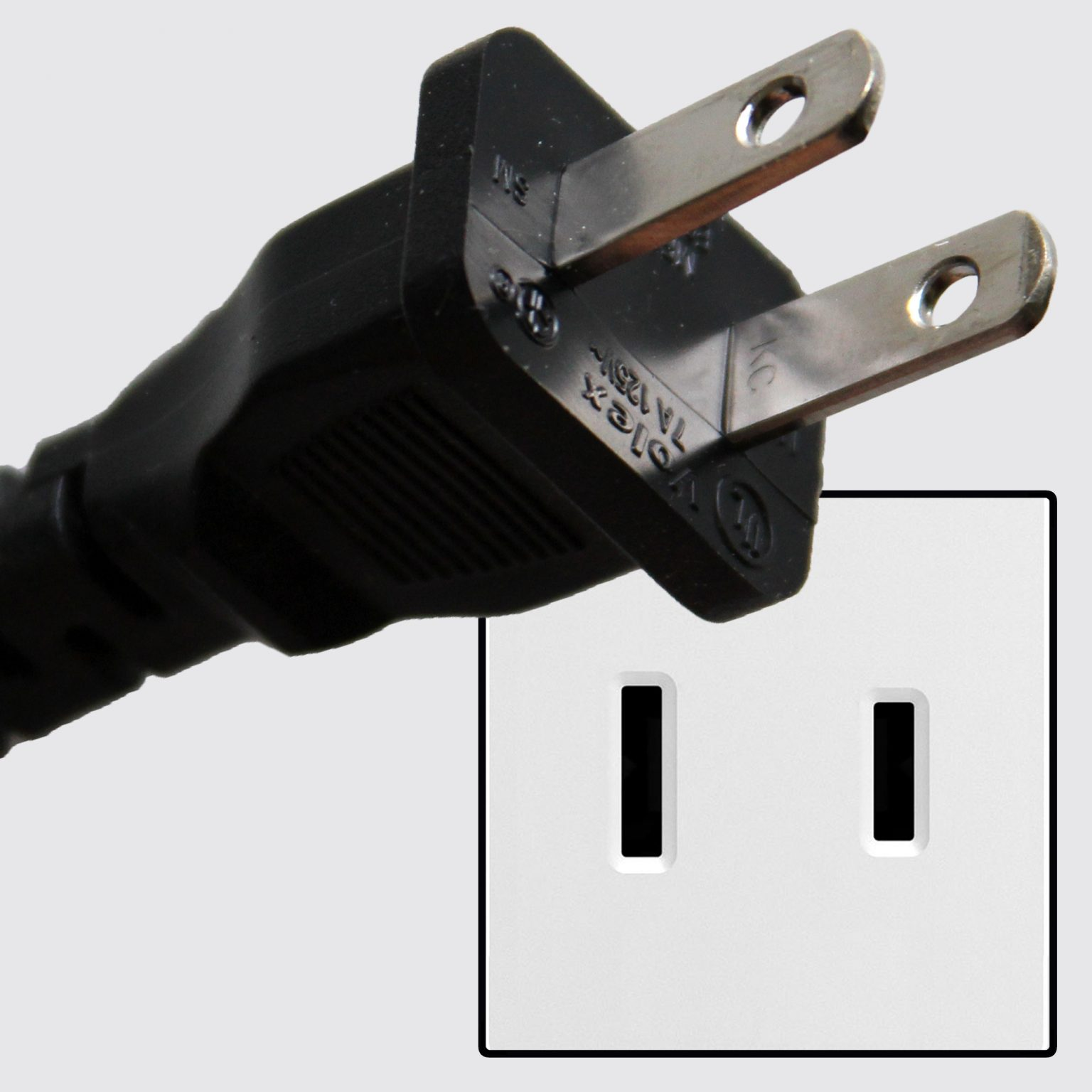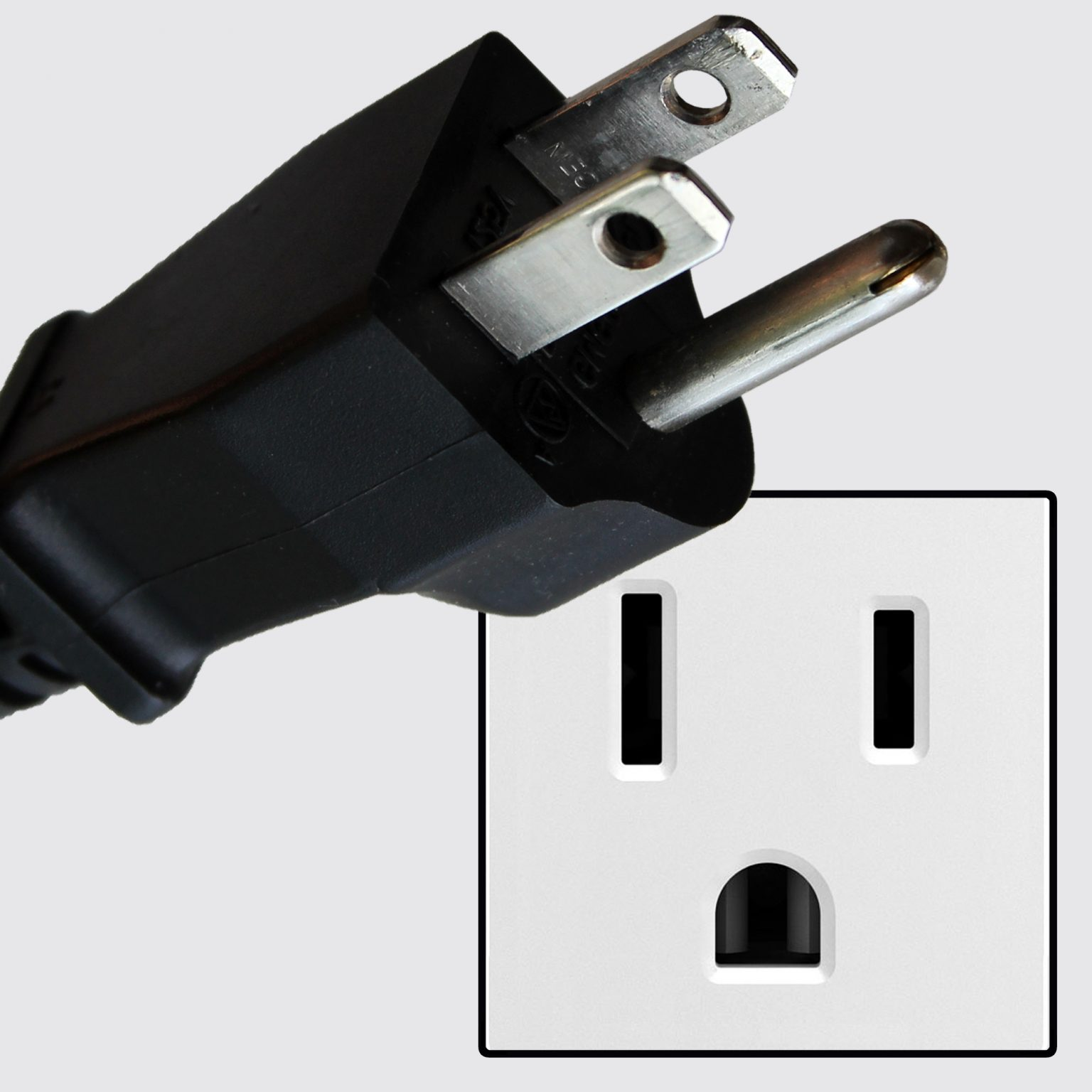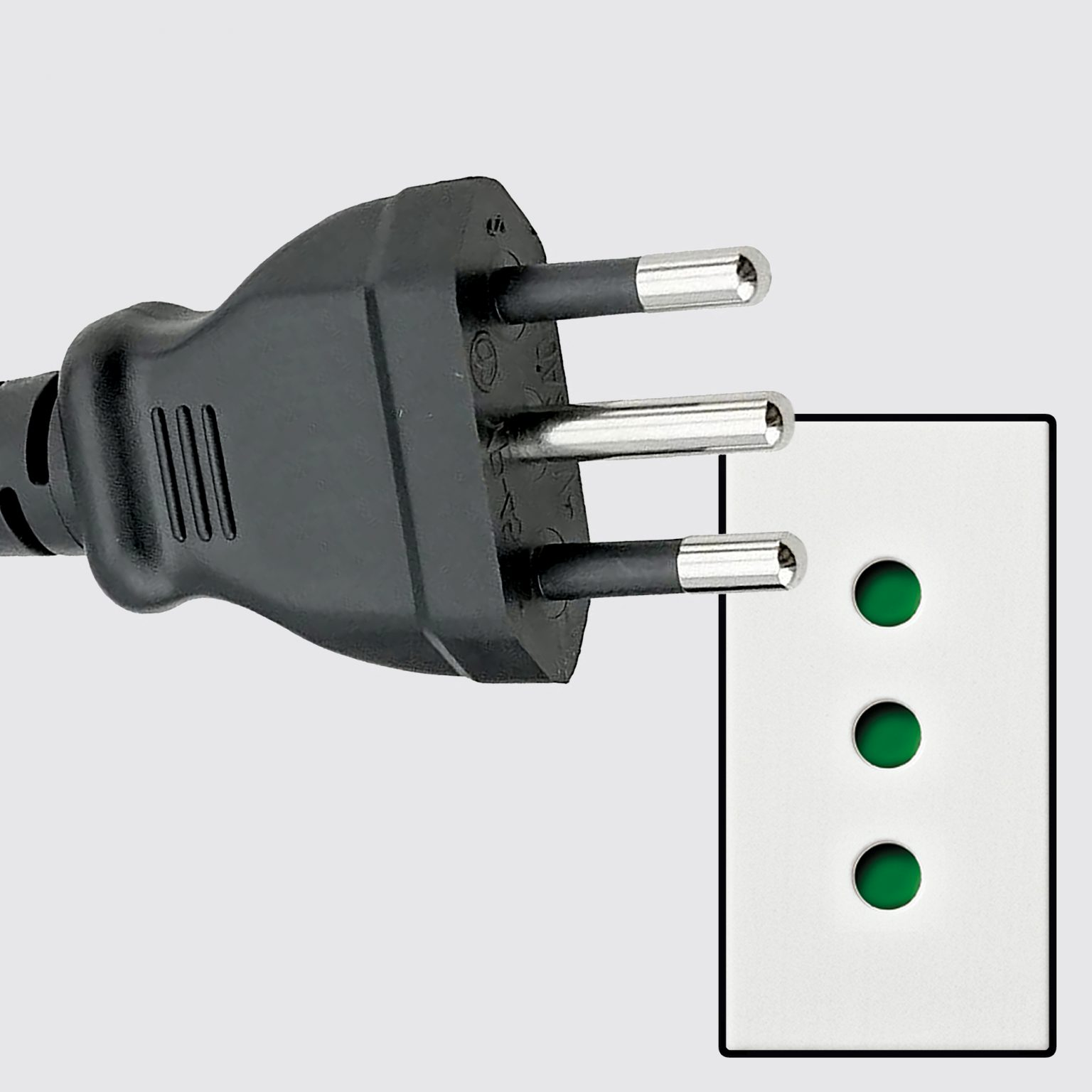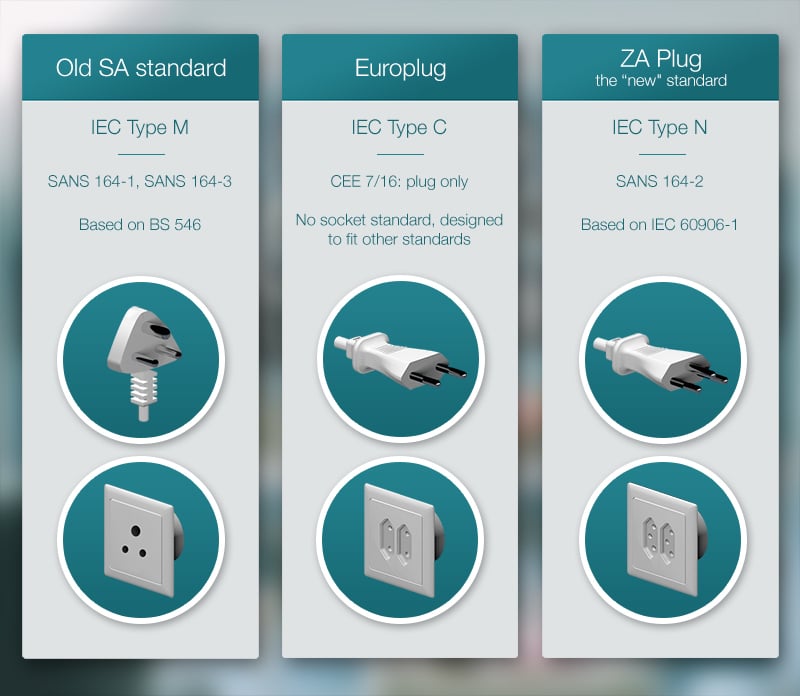They’re like that in this apartment we’re renting and I keep seeing them elsewhere. I don’t get it.
To turn them on and off.
Fair enough
deleted by creator
Big if true.
Massive if correct
Large if accurate
Wee if wrong
I remember when I was young and bending down all the time was a thing you could do painlessly. Ah, youth.
Have you tried using your toes?
You can use your toes for switches.
Not when there are no switches and you have to pull out the plug everytime you want to switch off the appliance.
deleted by creator
I present to you my favorite YouTube person:
The GFCI/RCD, a simple but life saving protector:
https://youtu.be/ILBjnZq0n8s?list=PLv0jwu7G_DFU62mIGZNag5vQ0a6tDGBpO
In defense of the Switched Outlet:
Electrical topics playlist:
https://youtube.com/playlist?list=PLv0jwu7G_DFU62mIGZNag5vQ0a6tDGBpO
I could just watch this guy all day lol
I expected Technology Connections or ElectroBOOM, was not disappointed.
the UK power grid is weird. mostly due to echoes of the war. used to be that, to save copper, the entire house and sometimes multiple houses on a street would be wired as one big loop of wire, no fuse box or anything. that’s where the individually fused plugs and switched sockets come from. then, since it turned out to be quite a good idea for safety, they kept doing it.
This is the answer. When all sockets are connected to one big loop, there’s fuses in each socket to prevent a device from screwing with the whole system.
Sorry but I’m going to need a source on that because there is no evidence of that being the reason UK plug sockets have switches
Other countries have switches on their sockets, Australia being one because I live here
Switches on sockets do make a ton on sense though for safety reasons for example if you need to quickly isolate electricity from the switch and the breaker hasn’t done anything
Switches also prevent arcing when you pull out a plug if an appliance doesn’t have an off switch and you can switch something off that you use commonly say a kettle but don’t unplug because you use it commonly so theirs less chance of an electrical fault happening while no one is there and its also the same reason I’ll demand an isolation switch be installed on electric stoves just incase the dail on the stove fails and the stove turns on
looking for a source is not hard. anyone can do it.
switches are not required by the bs1363 standard. the provision for them only arrived in the 1960s. there.
This isn’t strictly true. Most houses built between WWII and the '90s were built with sockets that didn’t have switches on them. It was only later safety regulations / suggestions that made the switches preferable.
Where I live was built in the late '80s right before switched sockets became more common. All the original sockets have no switch. Some in the kitchen have switches, but it’s clear these were added at a later date.
I’m not sure of the exact rulings and where and when a socket must have a switch, but you can still find switchless sockets for sale at the sorts of retailers who sell those sorts of things, so there are definitely places where those sockets are still allowed.
Why are people saying this?
I’ve lived in multiple UK houses and never once seen a socket with a fuse. Are you saying this was change way way back in the day?
All houses have fuse boxes (which then got upgraded to circuit breakers). Not one fuses in sockets. Would be a fucking nightmare to take the socket off and change a fuse.
sloppy wording, i meant “switched sockets and fused plugs”.
The fuse is actually in the UK plug (the big brick-like thing with the wire on it), not the socket. But yes, it’s a thing, and most of the rest of the world considers it overkill. Also a lot of cheap junky equipment (ironically the stuff where you’d most want the fuse) omits the fuse in the plug, go figure.
Yea I know, I’ve wired a plug.
Never seen a fuse in a socket though. That comment is completely wrong and yet it’s the most up voted reply.
Never seen a house without a fuse box either.
No fuses in the switch box though, it’s a box of circuits breakers
The used to be - I had a flat that used an old style fused breaker. Fun times trying to replace a fuse when it had blown…
Lol yeah can only imagine what playing ‘hunt the bad device’ would’ve been like back when those boxes had actual fuses on them. (That’s the game where the main circuit breaker gets tripped and you have to figure out first what ring it’s on, and then which specific item is tripping it)
Yea I know, I said that.
People still call them fuse boxes though.
Didn’t the uk used to have appliances without plugs that you’d need to wire yourself If inrecalling that Tom Scott video correctly
Yes. I believe that’s true but I’ve never done it myself.
So that switch will trip like a breaker?
No - there’s fuses in the plugs themselves, the switch is largely for convenience and safety - if you want to unplug something broken and potentially live, it’s much safer to switch it off at the wall than risk a shock given the current limit is on the breaker is so high
Are folks able to replace the fuses without exposing live parts? I totally get the safety angle.
fuse is in plug and accessible only when plug is disconnected
it’s also a very weird thing because fuses are supposed to protect what is downstream of them. so effectively fuse in plug protects cord and appliance only, not the wires in the wall. there’s breaker box for this
It is safer for the fuse to be in the plug for those people who think they are electricians and end up causing house fires or bzzzt’ing themselves
i understand that it’s remnant from times when fusebox wasn’t a thing and it was an attempt at protecting ring circuit, that’s all. it makes little sense
Allows you to remove power from the plugged in device without unplugging it. This provides convenience to easily and quickly turn things on and off and prevents arcing when unplugging. 240V 13A can arc a bit, particularly if unplugged under load, or on older sockets where the contacts have worn. While a little arcing doesn’t do much damage immediately, over time it will cause pitting and make a high resistance joint that will generate heat.
The switch only disconnects the live terminal, but the neutral terminal should be similar potential to earth (depending on how the building is wired).
Truly the king of plugs and sockets. The plugs are individually fused according to the device needs, ergonomic to use and exciting to stand on.
exciting to stand on
Thanks, I hate it.
How many devices do you have that don’t have a switch on the device itself?
Makes sense, American lie voltage (outlets) are 120V. 240V is considered high voltage and isn’t typically fed into residential units. Plugging anything rated for 120V into a 240V outlet is gonna be a bad time, and is why the outlets for high voltage are shaped differently.
I was gonna guess that the switches were too negate so-called vampire power, which is when a truck’s of electricity flows into appliances that are normally off. IMO that trickle is so negligible in a residence that is 6 effectively irrelevant, but that’s just here in the US. I don’t know anything about foreign electrical systems.
240 is used all the time for furnaces, driers, and increasingly EV outlet connections.
It’s just all our “normal” stuff is 120.
I wish our electric kettle outlets were 240. I’m unreasonably jealous that other places in the world can boil water faster!
I think you can have it, but you’d need to spend a pretty penny.
All it would take is calling an electrician to run the appropriate wiring from the place you want the kettle plugged in to you breaker box, connect it to the breaker box with the appropriate breaker, cap off the other end with the appropriate plug (a 240V plug does exist in America), and then buy a kettle capable of receiving the rated voltage and current and splice on the appropriate plug (because I presume you won’t find one sold with that plug).
An extremely expensive way to save maybe three minutes boiling water, but you can do it.
Allows you to remove power from the plugged in device without unplugging it. This provides convenience to easily and quickly turn things on and off and prevents arcing when unplugging.
That’s exactly what I do, because it’s more convenient than unplugging everything.
I live in South Africa, where we had rolling blackouts (called loadshedding) for a few years. It’s easier to switch everything back on when the power comes back than to plug it back into a socket without a switch, especially with my fucked up spine.
The electricity in the place I live was done poorly, so having something plugged in “live” risks a surge or something and then the appliance gets fucked and then everything smells like burnt plastic.
And that’s the best case scenario. Others have had housefires.
Also, the South African plugs aren’t pleasant accidentally to step on. It won’t pierce your foot, but it can still hurt like a motherfucker for a few seconds if you step on it in the wrong way.
Those UK plugs do look a lot more nasty to step on. I shudder at the thought.
I like the EU and US two prong cables ( 🔌?) where the prongs are parallel to the cable, but not the cables with the orthogonal prongs.
I like the EU and US two prong cables ( 🔌?) where the prongs are parallel to the cable, but not the cables with the orthogonal prongs.
Non-grounded plugs aren’t that great, though, and once you add the third prong the plug gets much less flat. Compare:


Maybe Italy and Chile have the best idea in terms of slim grounded plugs, although the lack of polarity might be a problem?

Also, IMO right-angle plugs are often better than straight ones because you can put furniture closer up against them and do so without stressing the cable.
why would the lack of polarity be a problem? the outlets only deliver AC, and everything plugged into them are made for AC.
right-angle plugs are often better than straight ones because you can put furniture closer up against them and do so without stressing the cable.
Yeah that is definitely a huge bonus. I’ve taken it for granted.
We’re slowly adopting three pronged Italian/Chilean-type plugs that will be “backwards-compatible” with the EU plugs. I have no clue about polarity or anything like that.

New sockets include em. The original three pronged socket is kind of a hazard. Kids can stick their fingers in there. Not sure how that got approved.
To turn shit on or off
This is virtually standard in Australia
Depending on who built the house, it’s the standard for a “good” house in Ghana, Nigeria, Zambia and I think Kenya.
It is standard in NZ
UK household electricity is pretty spicy compared to many other places - it has more safety features as a result. (3 pinned fused plug, socket switches etc)
Isn’t it just 230v 50 Hz like most of the world?
Apparently around 65-70 % of the world population (with access to electricity) has 230v 50 Hz.
How is it more “spicy” than anywhere else in Europe?
The many other places is the US
And Japan, and Canada, and Mexico, and the majority of South America, and a handful of countries in Africa and the Middle East.
I was mainly referring to almost all of the American continent(s), lots of Africa, China and a few other places too. I didn’t think I’d mentioned Europe.
A lot of dodgey wiring.
In our defence, most of that is legacy from the post war rebuild (copper shortages etc). The modern regs are comparable or better than a lot of places.
There’s enough of the dodgy stuff around that it needs to be accounted for, but it’s being phased out as new stuff it built or renovated.
Do they have the wiring on the outside of the houses so it’s easier to repair?
I’ve heard in UK they tend to do such things.No, it’s usually buried in the wall behind the plasterboard. Although it is possible to use surface trunking. It’s quicker and therefore cheaper to use trunking with less making good afterwards

It was a joke on UK putting water pipes on the outside of their houses.
Making them sometimes freeze and burst in the winter, but it’s easier to repair. 😋Hmm the only water pipes I’ve ever seen outside are for the garden hose 🤔
Well duh, they freeze and burst in winter so they obviously need to be outside for easier repair! Think of the mess they would make if they were inside the walls.
The rest of Europe has 220V as well and they don’t have switches on their outlets.
I have been with 110v plenty of times used to wire houses in my youth. Been hit once with 220v knocked me on my ass for 3 days. I stopped being so cavalier after that I wish they had those outlets vs the midevil outlets the US has.
So we can turn the power on and off.
Why else would you have a switch next to a power socket?
Most of the places in the world I have been to do without them, or at least did when I was there, so it confused me. But some people have given good explanations now.
Open one up. There’s also a fuse connected to the live wire. The amperage is dependent on the normal draw of the appliance. Just added safety features. Also the live and neutral holes only open up if you put the earth in first (that’s why it’s longer). British plugs are arguably the safest… Unless you leave them prongs up and step on it accidentally. That makes stepping on Lego feel like a shag carpet.
It seems a bit overengineered for little gain compared to good old schuko imo
You were down voted for whatever reason. These outlets are complete bullshit. You have your safeties in the electrical cabinet and then you make sure to wire your house according to certain standards. Schuko is leagues ahead of this crap. Modern Schuko sockets will only allow anything to enter, when both prongs are inserted at the same time. If you do happen to short anything, the FI switch (no idea what it’s called in English) will cut the power before anything can happen.
for anyone reading: FI -> RCD
Why can’t you just unplug it? If you have to go to the socket anyway… maybe I don’t understand because I’ve never lived with the convenience?
Depends on the device.
Something like a vacuum, sure. You’re probably going to move it around anyway.
But I used to have a Spectrum computer, and it had no power switch. If you plugged it in then it was just on. Much simpler to power off at the switch than unplug it and risk the plug falling down the back of the table into a rats nest of cables.
Plus I guess it’s one more step a toddler needs to do to electrocute themselves…
Even if you unplug it, the socket is still live at more than 200 V.
Maybe this was meant to be a joke, but that’s not how it works. If it were the switch would also not do anything, because what the switch does is exactly the same as unplugging the thing, i.e. cut a piece of the wire out.
Edit: unless you meant for safety reasons, in which case the shutter inside is a lot safer than the button.
The real question is why did the UK decide that on the outlet itself is the best place for that switch, as opposed to e.g. in the US where outlets are sometimes wired to a switch located next to the door to the room?
Having a switch next to the door would be useful if you’re using that socket for a lamp but not if you’re using them for anything else. In my kitchen the sockets for my under counter oven and fridge are under the counter and the switches are above it so I can easily access them.
Do you have individual switches for each plug socket / outlet wired next to the door? That seems like it would take a lot of wiring, and need a lot of switches.
The room I’m currently in has six double sockets spread out around the room. They each have one switch per socket like in the post’s image. If they were wired back to the door, they would need a lot more wiring, and one of the two entrance doors would have to be chosen. You’d then have to walk to that door every time you wanted to turn something off.
It seems like a lot more work for no real benefit.
Do you have individual switches for each plug socket / outlet wired next to the door?
No, the rooms I’ve seen wired with lamp circuits would typically have one switch next to the entrance with several outlets wired together to it in the same circuit, along with another circuit of several unswitched outlets. Flipping that one switch would turn all the lamps on at once.
(More rarely, there might be two lamp circuits in a room, with two switches controlling two groups of outlets. I think my parents’ formal living room might be like that, but we barely used it and I haven’t lived there for 20 years, so I can’t quite remember.)
and one of the two entrance doors would have to be chosen. You’d then have to walk to that door every time you wanted to turn something off.
Nah, that’s what three-way switches are for: you can have a switch at each entrance that controls the same group of outlets.
“so many”?
isn’t it all of them?
All of them in the UK.
No not all of them.
Source, I was born here.
i live in malta, we inherited your plugs and sockets. Never seen one without a switch over here. Til
For safety I guess?
I don’t get how that makes it safer.
So when the dumb person tries to insert a fork in the plug, they don’t die electrocuted.
Have you seen the list of safety features on UK plugs and sockets? The sockets have shutters in them that prevents anything being inserted into the live or neutral sockets unless the (longer) earth pin of a matching plug is inserted first.
Having said that, I agree: seems to be a belt-and-braces approach. No downsides.
And it allows you to cut power to an appliance without having to remove the plug.
Sockets with flaps are code in the us too and have been for a while.
Isn’t the USA 2 pin for many outlets, though. So there is no earthing. The uk socket requires the earth connection to be made by the longer earth pin on the plug before the flaps will open.
yes but you have to open both shutters at the same time. The ground doesn’t have a shutter.
No, because the ground carries no voltage. It’s literally connected to the ground to route any electricity away from the appliance in case a person touches it.
I like them, personally. You don’t have to use them but they are sometimes handy. I just spent 30 seconds feeling around a TV to turn it off only to discover it doesn’t have buttons. Killed it at the wall.
It’s not a deal breaker, in any case. The weird foreign convention I would like to shame is doors that require a key to open from the inside.
The weird foreign convention I would like to shame is doors that require a key to open from the inside.
Huh. Where have you seen those? Seems dangerous.
They’re used where there are windows close enough that, if broken by an intruder, the intruder would be able to operate the lock.
The better solution is, of course, to not use such doors.
I usually see keyed from the inside locks when there is glass in/near the door to prevent someone from breaking the glass, reaching in and unlocking the door.
If a burger is gonna break the glass, a keyed lock isn’t going to deter them. Unless it’s like only a tiny glass window on the door.
If a burger is going to break the glass, it’s either really bad glass or a really bad burger.
I stand by what I said.
The weird foreign convention I would like to shame is doors that require a key to open from the inside
You can’t lock yourself out with those
But you can lock yourself in. During a house fire.
You can lock yourself in with the other type too.
No you can’t. You can lock yourself out, but a typical residential house built to code in North America has a latch handle that always turns from the inside, even when locked, and usually unlocks by doing so to prevent accidental lock-outs. And likewise if the door has a deadbolt, it must have a deadbolt with a handle on the inside. Most other kinds of locks are also easily accessible and removed by hand from the inside. The point is that they can’t require a key from the inside, because if you can’t find the key then you are locked inside and in thick smoke and fire that the key may be impossible to reach. If any egress door requires a key to unlock from the inside it is considered a serious fire hazard and will never pass a code inspection. (Of course, foolish people can still add them later but you can’t prevent stupid and it’s still a fire hazard not to mention impractical)
These types of building code and fire code rules are typically written in blood. People have died because of this.
All house doors/egress doors in Brazil require keys to unlock. BUT (and it’s a big but) most houses here are made of bricks, with ceramic roofs.
It does make sense to have easy-to-escape houses when they are built of flammable materials with an accelerant for a roof.
I just spent 30 seconds feeling around a TV to turn it off only to discover it doesn’t have buttons.
Ugh. That annoys the shit out of me. Our dog chewed up the TV remote when she was a puppy, but only got to the power button. But since the TV had no physical buttons, we couldn’t turn it on and off anymore until we got a new remote.
I have an old android phone I keep around because it has an IR LED on top and I loaded it with a few free universal remote apps. They all work offline and it’s come in handy so many times.
As any cautious parent could tell you, these are helpful when the toddler starts sticking things in places where they don’t belong. Such as metal cutlery. In the power sockets.
This isn’t the reason.
The switch is more likely to attract a toddlers attention. Some have little red lights even. It would be false sense of security at best. You can get those plastic blank plugs to stop your kid putting a fork in there.
The switch is so, if you kid is being electrocuted by putting their fork in the toaster, you can turn it off at the wall without having to touch the electrified kid.
Don’t toddlers start pressing buttons even earlier? Not sure this alone could protect them
True, but this is at least a little safer
Kind of off topic, but I’ve just gotta add that the safety shutters over the positive and negative terminals that only open when the ground pin (which is longer than the others on the plug) is inserted up top is brilliant, it basically makes short circuiting impossible. Electrical outlet design is one of the few things I’ll concede the UK does better than the rest of the world.
Americans don’t have this???
We do have ground fault circuit interrupt (GFCI) outlets, which are required when a socket is within a certain distance of a water source but can be installed on all outlets if you want. They have a little breaker inside that trips automatically if it detects a problematic difference in current flow.
They’re not on/off switches but you could press the “test” button on the outlet to break the circuit.
I’ve also seen some whole outlets that are switched on/off from a light switch elsewhere in the room. Those are super annoying because there’s no required indication that they work that way so you get to find out for yourself.
In my little Eastern European shithole, GFCI relays are required for any apartment or house, installed to the incoming power main. Is that not a thing over there?
Sometimes we have specific plugs that are wired to a wall switch that can be used to turn those specific outlets on and off. All the examples I know of are for standing lamps, so they can be turned on an off like ceiling lights.
I’ve only seen this a few times, including my current house.
It’s been code for a long time that every room must have a switched lighting source, and before recessed lights became more common or if the original builder didn’t put a ceiling light or wall sconce, you’d have a switched outlet for a lamp. Typically it’s only half of one outlet though, unless your house was wired by a crackhead like mine.
Only half of one outlet? That sounds super frustrating. I think it would take me a while to discover that the random light switch that doesn’t do anything is related to the power point where only one side charges my phone.
Yeah, it makes sense from a functional standpoint, being that often you’ll only want to switch on lamp, while having full constant functionality of the other plug.
 You basically break that tab between the two screws, then wire the constant power to one, and the switch leg to the other.
You basically break that tab between the two screws, then wire the constant power to one, and the switch leg to the other.But yeah, it’s not always consistent where that outlet is located within a room. Like I have the tools to figure it out pretty quick, but you basically just have to take a lamp and plug it into each outlet with the switch off until you find it.
Yeah, I like the idea of being able to switch floor lamps and what not from the doorway. No-one likes the big light, right?
Not sure if I like it enough to implement it in my dream home though. Possibly with some kind of different shaped plug, or a colour code that matches the switch?
My plan for when we build is to run flex conduit for everything, so that if a want to add or move a switched outlet, the option is there.





















